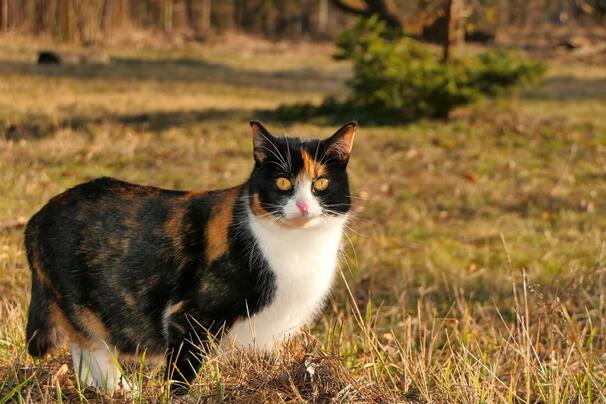|
Miami-Dade County Animal Services in Florida has a program that makes it easy for locals to either bring in community cats for free surgery and vaccinations, or report strays so that the county can do the entire TNR process themselves – take a look at their simple yet comprehensive report form.
More municipal animal departments should offer free TNR. It is good for the cats and the community. Miami-Dade has even gone a step further to manage their stray and feral cats through TNR; their Tip the Trapper Initiative offers county residents $15 per outdoor cat brought in for sterilization and vaccinations! The $15 payment is contingent upon the trapper’s adherence to essential guidelines, such as “all cats must be treated humanely, with dignity and respect,” and “Once services have been performed and the cats are medically cleared for release, the trapper must return the cats to the location where the cats were trapped. The modest cash reward may sway someone who has been ignoring a group of nearby outdoor cats because they think trapping them and bringing them to the county clinic is a hassle, or perhaps someone who has noticed the cats but never considered taking action. The Tip the Trapper Initiative kicked off in 2019, and that year more than 12,000 cats were TNR’d through animal services. Their TNR program continues to be highly impactful; they reported 242 cats TNR’d during the week of July 25th alone.
11 Comments
 Photo by Krzysztof Niewolny on Unsplash The government-funded Polish Academy of Sciences has classified domestic cats (Felis catus) as an “invasive alien species.” This designation is given to species that are not native to a region’s ecosystem, and cause damage to that ecosystem. The institute has said that the label is purely scientific and not a call to action against cats. They say that the number of birds and other small native animals cats kill per year qualifies them to be listed this way in their national database. In response to public concern, the institute put out a statement saying it is “opposed to any cruelty towards animals.” There is no reason to doubt the Academy’s sincerity, but it is fair to question their judgment. Given the deadly persecution that cats face in places such as Australia and, sadly, Alaska and Hawaii in the name of environmental protection, attaching such stigmatic terminology to cats in Europe could give rise to culls there as well. Beyond the Academy’s moral responsibility to avoid putting cat lives in danger, the classification is based on shaky science. There simply is not sufficient information available to determine if cat predation has any detrimental effects on the overall populations of prey animals, including birds; yet environmental and bird groups, like the American Bird Conservancy, continue to push for the eradication of feral cats, claiming cats are in fact contributing to the decline of bird species and other wildlife. The few studies that have been conducted on cat predation are from remote islands with closed ecosystems, where local bird populations have not evolved with predators. Because cat predation on continents is very different from island environments, it is inaccurate and inappropriate to extrapolate data from these particular studies to predict predation on continents. Like any predator, cats tend to feed on the young or old and those who are sick or in a weakened state because they are the easiest to catch. And the UK’s Royal Society for the Protection of Birds (RSPB) states, “It is likely that most of the birds killed by cats would have died anyway from other causes before the next breeding season, so cats are unlikely to have a major impact on populations.” Every year, many millions of birds die naturally due to starvation, disease, or other forms of predation. And most of the millions of baby birds hatched each year will die before they reach breeding age,” (RSPB, 2014). One truth that is incontestable, however, is that cats are easy scapegoats for governments and institutions that can’t or won’t address much larger environmental hazards. According to the European Environment Agency (EEA), agriculture is the primary danger to nature in Europe. Per the EEA’s website, “Pollution by pesticides used in agriculture is the main cause of the worrying decline in the number of insect-eating birds and farmland birds.” * The site also names habitat loss and damage, unsustainable forestry, hunting, and overfishing as greater threats to wildlife than “alien invasive species.” The more one looks into it, the less wise it seems to officially label cats as a danger to the natural environment in Europe. Even if there is any truth to the claim, nothing has been accomplished but to spark or fuel animosity toward cats. * https://www.eea.europa.eu/signals/signals-2021/articles/what-is-harming-europe2019s-nature Although we disagree with the claim that cat predation is a proven major factor in the decline of birds and other wildlife, we would rather no animals are killed by cats who don’t need to hunt for their food. Here are some tips we can all follow to protect wildlife from unnecessary predation: 
|
Details
AuthorAlley Cat Rescue is leading in the way in promoting humane and compassionate care for ALL cats. Archives
April 2024
Categories
All
|
 RSS Feed
RSS Feed